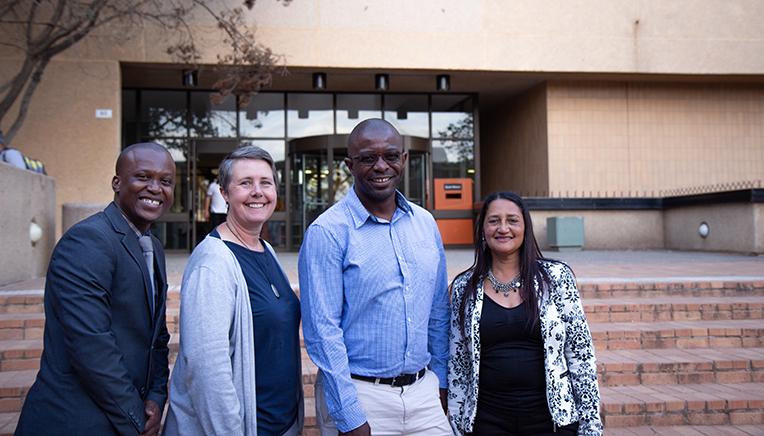Student success is one of the key components in the
Integrated Transformation Plan. Facilitated by a grant from the
Media Information and Communication Technologies (MICT) SETA, the
Department of Communication Science at the University of the Free State (UFS) is providing an additional training opportunity for its students with a programme for second-year journalism students.
The MICT SETA Journalism Short Programme is a prestigious extracurricular opportunity. “The programme will provide additional exposure and training in specialist areas not necessarily covered in depth as part of the BA (Journalism) degree,” says
Dr Willemien Marais, Programme Director: Communication Science. “Participation in this programme provides students the opportunity to build a portfolio to enhance their employability.”
The SETA grant was acquired through an application made by the department with the assistance of Juanita Burjins Head: Leadership and Development Unit in the Human Resources Department at the UFS, and was signed earlier this year.
In-depth training The programme will entail short courses on writing, photojournalism, documentary filmmaking, entrepreneurship and personal development.
“It gives us an opportunity to swim in an ocean where it feels you are drowning. I am very excited to have been chosen to be part of the programme,” says.Rene Robinson, a second-year Journalism student and one of 20 selected for the programme. They were selected based on academic performance as well as on the essay they wrote.
Robinson says: “As a Journalism student you meet a lot of negativity about the degree you are pursuing and this programme offers a chance to elevate yourself.”
Keamogetswe Mosepele, who is also part of the programme, adds: “I am really excited to see what it will deliver.”
The programme specifically targets second-year students so these students, once in their final year, can share their experience through assisting a new cohort of first-year journalism students in various practical exercises, thus reinvesting in the department. They will also work at various media partners of the Department of Communication Science.
 From the left; Nkonsinathi Gabuza, from the MICT Seta; Dr Willemien Marais; Prof Collin Chasi, Head of the Department Communication
From the left; Nkonsinathi Gabuza, from the MICT Seta; Dr Willemien Marais; Prof Collin Chasi, Head of the Department Communication
Science and Juanita Burjins. (Photo: Rulanzen Martin)